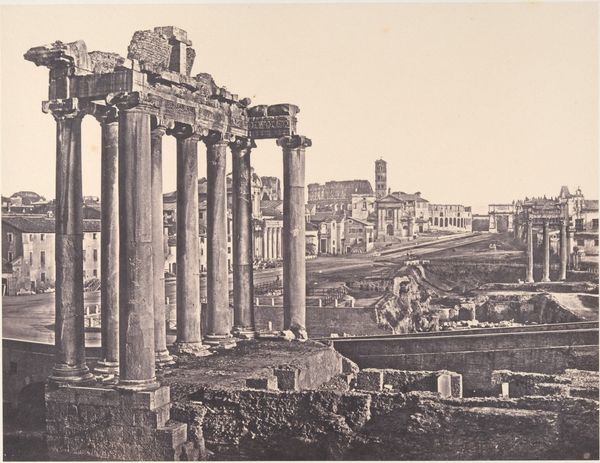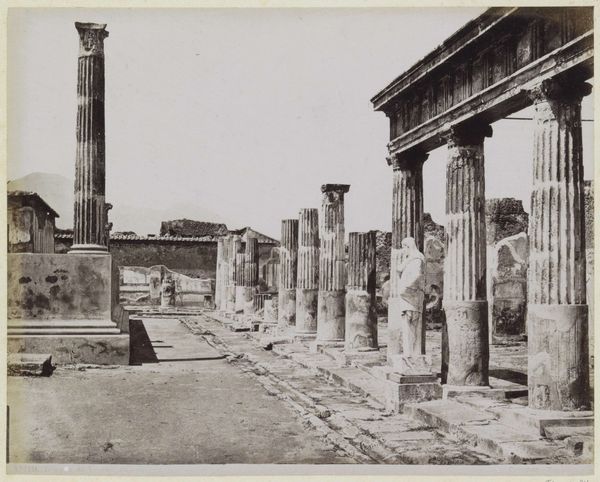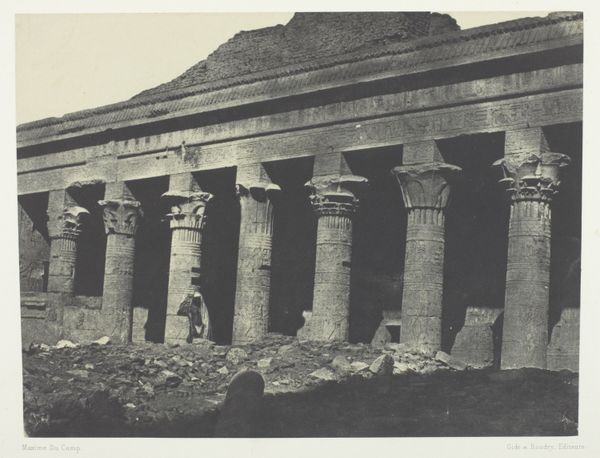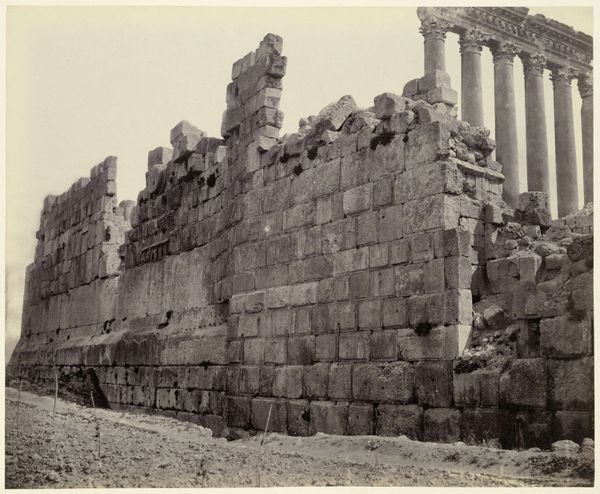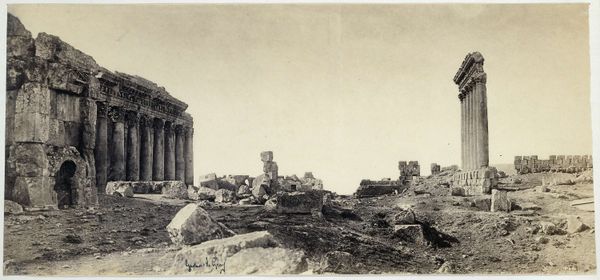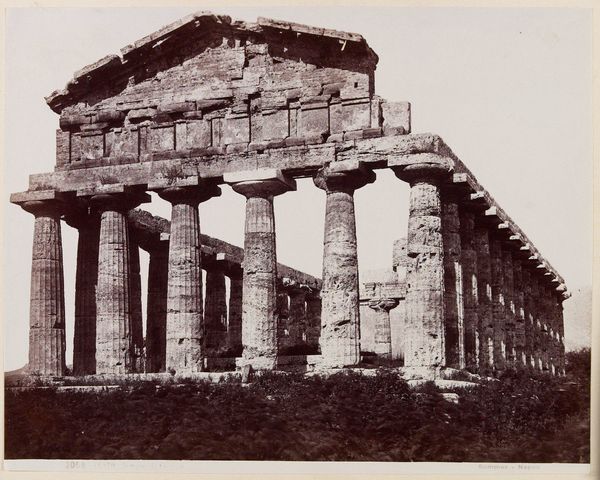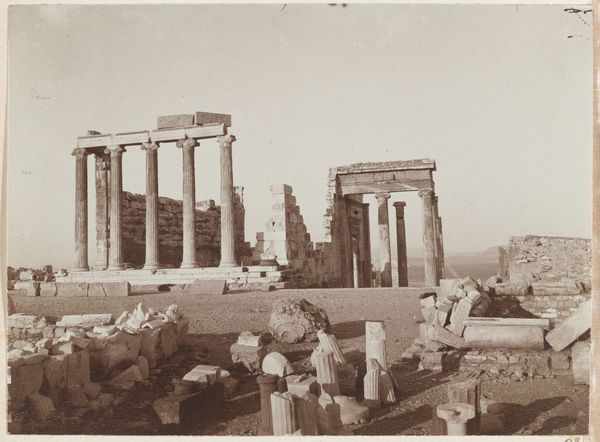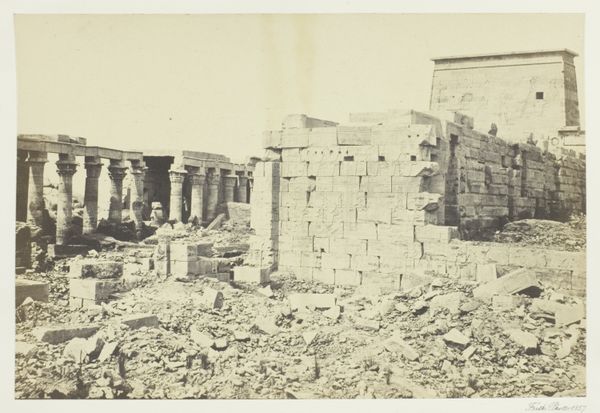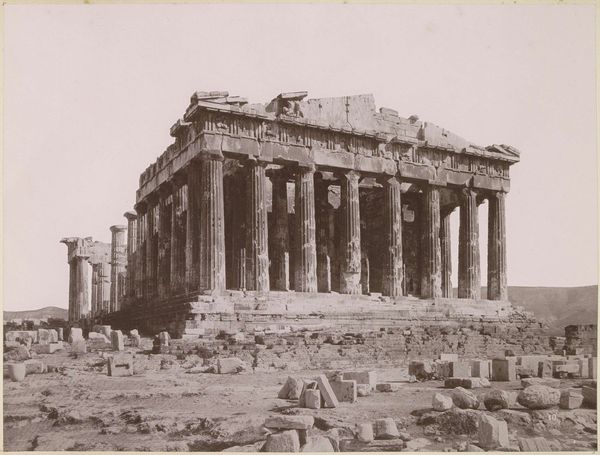
print, architecture
#
architectural sketch
# print
#
greek-and-roman-art
#
landscape
#
history-painting
#
architecture
#
realism
Copyright: Public domain
Giuseppe Barberis created this engraving of the Tempio di Giunone Lacinia, or Temple of Hera Lacinia, sometime in the late 19th or early 20th century. It shows the ruins of a Greek temple in present-day Crotone, Italy. The engraving gives us insight into the cultural and institutional context of archaeology in Italy at the time. The image romanticizes the idea of the lone explorer discovering the past. But this obscures the fact that archaeology was, and is, a highly institutionalized practice, tied to museums, universities, and governments. Moreover, the European interest in classical antiquity was closely bound up with colonialism and imperialism. This interest often served to legitimize the political and economic domination of other cultures. To understand Barberis's engraving fully, we might consult a range of sources: archaeological reports, travel narratives, and histories of collecting. The meaning of art is always contingent on its social and institutional context.
Comments
No comments
Be the first to comment and join the conversation on the ultimate creative platform.

